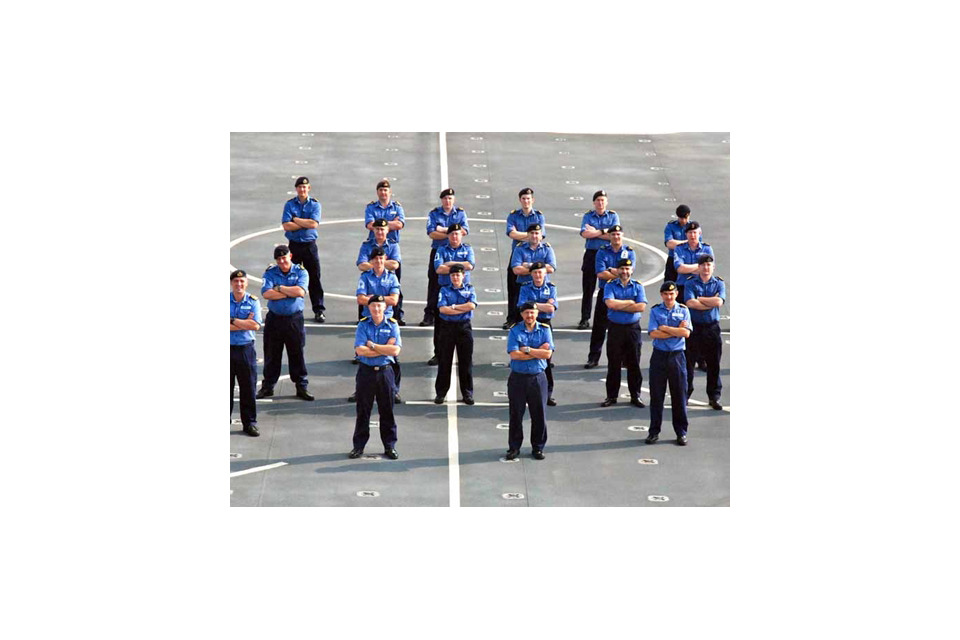Royal Navy's Gulf-based minehunter force changes command
Portsmouth mine warfare experts have taken over from their Faslane colleagues in charge of the Royal Navy's mine warfare force in the Gulf.

HMS Quorn and HMS Ramsey operating at the height of summer in the Gulf
After 6 months in the hot seat, the battle staff from the Faslane-based 1st Mine Countermeasures Squadron (MCM1) have handed over command of the UK Mine Countermeasures Force to Portsmouth’s MCM2.
Using RFA Cardigan Bay as their ‘command centre’ the team from the 2nd Mine Countermeasures Squadron will oversee the activities of 4 British minehunters which are permanently based in Bahrain.
The 2 squadrons take it in turns to provide battle staffs directing the actions of the four-strong minehunting force - 2 Hunt Class ships (HMS Quorn and Atherstone) and 2 Sandown Class ships (Ramsey and Shoreham) - using the RFA mother ship (currently Cardigan Bay) as their floating ‘command centre’.
And through the 6 months when MCM1 were in the Gulf, there was quite a lot to command - all at a time of year when the weather conditions are the most challenging imaginable for the sailors and their equipment.

The 1st Mine Countermeasures Squadron (left) and the 2nd Mine Countermeasures Squadron onboard RFA Cardigan Bay [Picture: Crown Copyright/MOD 2012]
There was an exercise in the Gulf of Oman with US and Omani forces, followed by a joint Anglo-American exercise in the central Gulf which included embarking a US dive team and recompression chamber for drills, and training with the Royal Navy’s Fleet Diving Unit and unmanned underwater vehicle team.
This exercise also saw the first use of US Riverine combat boats which used the submersible dock of Cardigan Bay as their base; the heavily-armed boats provide high-speed force protection for task groups.
The highlight of MCM1’s tenure was the inaugural International Mine Countermeasures Exercise attended by some 30 countries in September - the largest such workout ever staged in the region involving 3,000 personnel spread across 1,000 nautical miles (1,852 kilometres), with significant Royal Navy representation throughout.
It was also a great opportunity for the battle staff to assume tactical command of a group which included a number of UK and US minehunters and Riverine boats, as well as a US explosives ordnance disposal mobile detachment and a team of divers from the Royal New Zealand Navy.

RFA Lyme Bay and Cardigan Bay berthed astride the finger jetty at the port of Mina Salman in Bahrain (library image) [Picture: Crown Copyright/MOD 2012]
Commander Andy Lamb, Commanding Officer of MCM1, said:
The international exercise tested a host of mine warfare activities and involved effort across the region.
The Royal Navy’s contribution stretched across the full spectrum from dive groups to minehunters, logistical support to command and control; all were fully integrated in what was a very valuable exercise. This blend of people and capabilities afforded a rare opportunity to train together.
This latest deployment has seen first-class sailors operate extremely well in challenging conditions. This type of deployment is tough on our people, our kit and our families. It is clear, however, that these efforts are worth it and ensure that the UK remains the premier mine countermeasures force.

The joint Anglo-American exercise in the central Gulf saw the first use of US Riverine combat boats [Picture: Crown Copyright/MOD 2012]
He formally handed over charge of the force to his MCM2 counterpart Commander Martin Mackey aboard Cardigan Bay. The latter said of his new appointment:
The challenges facing the staff, the ships and the personnel continue. It is my job to build on the success and experience of my predecessor, and I look forward to meeting these challenges in order to deliver the Royal Navy’s enduring mine countermeasures presence in the Gulf.